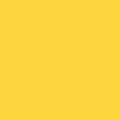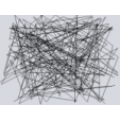Hej, słuchajcie, kto mi mógłby trochę czasu poświęcić i oświecić mnie jak zrobić efekt ustawiania kąta obrazka względem pozycji kursora? W sensie mam napisać grę okienkową, chciałbym by na dole był obraz działa, i ten obraz żeby ustawiał się górą(lufą) w kierunku celownika. Póki co to mam załadowany obrazek i mniej więcej pojęcie jak funkcja rotate działa, ale dalej to czarna magia...

- Rejestracja:około 11 lat
- Ostatnio:około 2 godziny
- Postów:8410
- Rejestracja:około 13 lat
- Ostatnio:ponad 10 lat
- Postów:14
0
Kurwsza mać.. Ja już nie wiem co źle robię, czy to aż tak trudne zadanie by stworzyć rotację obiektu, tak żeby wskazywał na pozycję myszki?
Zobaczcie, ja już ocipiałem:
Sekcja rysowania:
protected void paintComponent(Graphics gs)
{
poblicz = new oblicz();
Graphics2D g=(Graphics2D)gs,g1=(Graphics2D)gs,g3=(Graphics2D)gs;
//Ustaw tryb lepszej jakości grafiki (wygładzanie/antyaliasing)
g.setRenderingHint(RenderingHints.KEY_ANTIALIASING, RenderingHints.VALUE_ANTIALIAS_ON);
// Narysuj tło
g.drawImage(param.bgImage, 0, 0, null);
g.drawImage(param.bgImage,0,0, new ImageObserver()
{
public boolean imageUpdate(Image img,int infoflags, int x, int y, int width, int height)
{
return true;
}
} );
int pozx=425,pozy=575;
double kat = poblicz.kat(katx,katy,pozx,pozy);
double starykat=kat;
if(kat != starykat)
{
kat = poblicz.kat(katx,katy,pozx,pozy);
}
//w klasie param jest cannon zapisany(w sensie ta armata co ma się obracać tam gdzie jest myszka) jako BufferedImage.
g1.drawImage(pcannon.rotate(param.cannon, kat,null), pozx, pozy, new ImageObserver()
{
public boolean imageUpdate(Image img,int infoflags, int x, int y, int width, int height)
{
return true;
}
} );
System.out.println(kat);
}
Dalej, algorytm do liczenia kąta:
package pakiet;
public class oblicz
{
public double kat(double posx, double posy, double imgposx, double imgposy)
{
double Ax= imgposx;
double Ay= imgposy;
double Bx=posx;
double By=posy;
double Cx = 1024;
double Cy = 768;
if(posx<imgposx)
{
Cx = 1024;
Cy = 768;
}
else
{
Cx=0;
Cy=0;
}
double AB2=Math.pow(Ax-Bx,2)+Math.pow(Ay-By,2),AB=Math.sqrt(AB2);
double BC2=Math.pow(Bx-Cx,2)+Math.pow(By-Cy,2),BC=Math.sqrt(BC2);
@SuppressWarnings("unused")
double AC2=Math.pow(Ax-Cx,2)+Math.pow(Ay-Cy,2),AC=Math.sqrt(AC2);
double alfa=Math.atan((AB2+BC2-AC2)/(2*AB*BC))*360/Math.PI;
if(posx<1024/2)
alfa=-alfa;
return alfa;
}
}
Dalej, klasa obracająca obrazek:
package pakiet;
import java.awt.*;
import java.awt.geom.*;
import java.awt.image.*;
import java.lang.Math;
public class cannon
{
public static BufferedImage rotate(BufferedImage inputImage, double angle, Color backgroundColor)
{
Rectangle outputImageBounds = calculateBoundsOfRotatedImage(inputImage, angle);
AffineTransform transform = new AffineTransform();
transform.translate(-outputImageBounds.x, -outputImageBounds.y);
transform.rotate(Math.toRadians(angle));
BufferedImage outputImage = new BufferedImage(outputImageBounds.width, outputImageBounds.height, BufferedImage.TYPE_INT_RGB);
Graphics2D g = outputImage.createGraphics();
g.setColor(null);
g.fillRect(0, 0, outputImageBounds.width, outputImageBounds.height);
g.drawImage(inputImage, transform, null);
g.dispose();
return outputImage;
}
private static Rectangle calculateBoundsOfRotatedImage(BufferedImage image, double angle)
{
AffineTransform transform = new AffineTransform();
transform.rotate(Math.toRadians(angle));
return transform.createTransformedShape(new Rectangle(image.getWidth(), image.getHeight())).getBounds();
}
}
Próbowałem też z konwersją z SWT na AWT żeby najpierw obrócić w bufferedImage a później za pomocą drawImage po prostu narysować bez białego tła, ale to jakieś jehowe, same błędy wyskakują...
package pakiet;
import java.awt.Frame;
import java.awt.Graphics;
import java.awt.Insets;
import java.awt.image.BufferedImage;
import java.awt.image.ColorModel;
import java.awt.image.DirectColorModel;
import java.awt.image.IndexColorModel;
import java.awt.image.WritableRaster;
import org.eclipse.swt.*;
import org.eclipse.swt.widgets.*;
import org.eclipse.swt.graphics.*;
public class convert
{
static BufferedImage convertToAWT(ImageData data)
{
ColorModel colorModel = null;
PaletteData palette = data.palette;
if (palette.isDirect) {
BufferedImage bufferedImage = new BufferedImage(data.width,
data.height, BufferedImage.TYPE_INT_ARGB);
for (int y = 0; y < data.height; y++) {
for (int x = 0; x < data.width; x++) {
int pixel = data.getPixel(x, y);
RGB rgb = palette.getRGB(pixel);
bufferedImage.setRGB(x, y, data.getAlpha(x, y) << 24
| rgb.red << 16 | rgb.green << 8 | rgb.blue);
}
}
return bufferedImage;
}
else
{
RGB[] rgbs = palette.getRGBs();
byte[] red = new byte[rgbs.length];
byte[] green = new byte[rgbs.length];
byte[] blue = new byte[rgbs.length];
for (int i = 0; i < rgbs.length; i++)
{
RGB rgb = rgbs[i];
red[i] = (byte) rgb.red;
green[i] = (byte) rgb.green;
blue[i] = (byte) rgb.blue;
}
if (data.transparentPixel != -1)
{
colorModel = new IndexColorModel(data.depth, rgbs.length, red,
green, blue, data.transparentPixel);
}
else
{
colorModel = new IndexColorModel(data.depth, rgbs.length, red, green, blue);
}
BufferedImage bufferedImage = new BufferedImage(colorModel, colorModel.createCompatibleWritableRaster(data.width, data.height), false, null);
WritableRaster raster = bufferedImage.getRaster();
int[] pixelArray = new int[1];
for (int y = 0; y < data.height; y++)
{
for (int x = 0; x < data.width; x++)
{
int pixel = data.getPixel(x, y);
pixelArray[0] = pixel;
raster.setPixel(x, y, pixelArray);
}
}
return bufferedImage;
}
}
}
edytowany 1x, ostatnio: red1791
